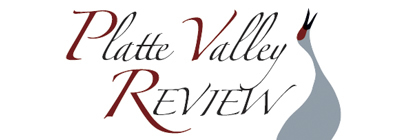
Table of Contents
Chamoru Poetry |
"Kantan Chamorrita": A Selection of Contemporary Chamoru Poetry Edited by Craig Santos Perez The Kantan Chamorrita is an oral verse form of the indigenous Chamoru people from the Mariana Islands, located in the part of the Pacific Ocean colonially known as Micronesia. Traditionally, the Kantan Chamorita is a four-line poem in which the second and fourth lines rhyme. One singer will initiate the chant, and another singer will respond and challenge the initial singer to respond. This call and response continues as audience members will take sides and throw in their own rhyming phrases or memorable metaphors. In "Kantan Chamorrita: Traditional Chamorro Poetry, Past and Future" (1993), Laura Souder describes how before World War II, whole neighborhoods would gather along the shore from the village of Hagatna to the village of Tohmum for communal net-fishing. After eating, someone would begin the Kantan Chamorrita: For miles up and down the shoreline, the calls and responses of the lead singers would be heard. Sometimes a neighborhood group would respond. Sometimes women in the group would band together to try to outsmart the men through their verse innovations. Rhyming phrases would be thrown back and forth, sometimes for hours, with different people joining in and calling out challenges or responding to the rhyming of others" (189) The Kantan Chamorrita often accompanied communal activities, such as roof thatching and weaving, husking rice and grinding corn. Perhaps it was even sung while our ancestors wove their hair into a net to catch the giant fish that was devouring the largest island in the Marianas archipelago: Guahan (Guam). Because of colonialism, the Kantan Chamorrita is endangered. Our language is endangered. Our waters are overfished. Our beaches are polluted. The coastal villages are occupied by hotels, tourists, restaurants, and military bases. Much of our population has been displaced from our homeland. Despite these ongoing efforts to silence and eradicate the Chamoru spirit, Chamoru poets continue to assert our right to express our identities, our histories, our culture, our language, our right to self-determination, and our dream of a sovereign future. I feel hopeful about our future because cultural practitioners are working to preserve and revitalize the Kantan Chamorrita tradition. I feel hopeful about our future because the spirit of contemporary Chamoru poetry is rooted in the communal spirit of the Kantan Chamorrita. The poets in this feature cast their nets into the ocean of silence. They harvested and prepared the catch, feeding us with their words. They sing their poems from different shores throughout the Chamoru diaspora. As you read this feature, imagine the poets standing on their respective shore (from Guahan to California to Alabama to North Carolina). Imagine the poets calling out to each other. Imagine the poets responding with their own words. Imagine all their voices singing and chanting at once. Imagine our collective chant weaving the distances between us and filling our hearts with the spirit of the Kantan Chamorrita.
Bibliography: Souder, Laura. "Kantan Chamorrita: Traditional Chamorro Poetry, Past and Future." Manoa, Vol. 5, No.1, Writing from the Pacific Islands (Summer, 1993), pp.189-192.
|